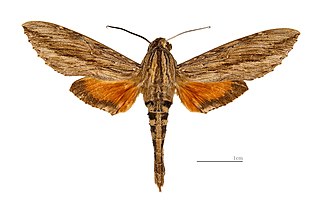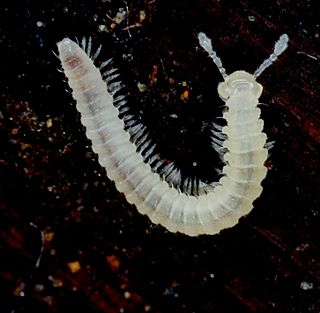
A satrap was a governor of the provinces of the ancient Median and Persian (Achaemenid) Empires and in several of their successors, such as in the Sasanian Empire and the Hellenistic empires. A satrapy is the territory governed by a satrap.

Democedes of Croton, described in The Histories of Herodotus as "the most skillful physician of his time".

Father Jean-Vincent Scheil was a French Dominican scholar and Assyriologist. He is credited as the discoverer of the Code of Hammurabi in Persia. In 1911 he came into possession of the Scheil dynastic tablet and first translated it. After being ordained in 1887, he took courses in Egyptology and Assyriology at the École des Hautes Études, and was a student at the Collège de France, where he was a pupil of Assyriologist Julius Oppert. In 1890/91 as a member of the French Archaeological Mission of Cairo, he took part in excavations at Thebes. In 1892 he conducted excavations near Baghdad for the Ottoman Imperial Museum, followed by work in Constantinople, where he was tasked with classifying and drafting a catalog of Assyrian, Chaldean and Egyptian antiquities of the museum.
Number systems have progressed from the use of fingers and tally marks, perhaps more than 40,000 years ago, to the use of sets of glyphs able to represent any conceivable number efficiently. The earliest known unambiguous notations for numbers emerged in Mesopotamia about 5000 or 6000 years ago.
Pierre Briant is a French Iranologist, Professor of History and Civilisation of the Achaemenid World and the Empire of Alexander the Great at the Collège de France, Doctor Honoris Causa at the University of Chicago, and founder of the website achemenet.com.
Bruce Lincoln is Caroline E. Haskell Distinguished Service Professor Emeritus of the History of Religions in the Divinity School of the University of Chicago, where he also holds positions in the Center for Middle Eastern Studies, Committee on the Ancient Mediterranean World, Committee on the History of Culture, and in the departments of Anthropology and Classics. Before his arrival at the University of Chicago, Lincoln taught at the University of Minnesota (1976–1994), where he co-founded the Program in Comparative Studies in Discourse and Society.
Litavis is a Gallic deity whose cult is primarily attested in east-central Gaul during the Roman period. She was probably originally an earth-goddess. In medieval Celtic languages, various terms derived from *Litauia came to designate the Brittany Peninsula.

Athura, also called Assyria, was a geographical area within the Achaemenid Empire in Upper Mesopotamia from 539 to 330 BC as a military protectorate state. Although sometimes regarded as a satrapy, Achaemenid royal inscriptions list it as a dahyu, a concept generally interpreted as meaning either a group of people or both a country and its people, without any administrative implication.

Caradrina kadenii, or Clancy's rustic, is a moth of the family Noctuidae. The species was first described by Christian Friedrich Freyer in 1836. It originates from southern and central Europe, Asia Minor and southern Russia but in the 21st century it has extended its range to the north.

The Twenty-seventh Dynasty of Egypt, also known as the First Egyptian Satrapy, was a province (Satrapy) of the Achaemenid Persian Empire between 525 BC and 404 BC. It was founded by Cambyses II, the King of Persia, after the Battle of Pelusium and the Achaemenid conquest of Egypt, and his subsequent crowning as Pharaoh of Egypt. It was disestablished upon the rebellion and crowning of Amyrtaeus as Pharaoh. A second period of Achaemenid rule in Egypt occurred under the Thirty-first Dynasty of Egypt.

Dilophonotini is a tribe of moths of the family Sphingidae described by Hermann Burmeister in 1878.

Oryba achemenides is a moth of the family Sphingidae.

Oryba kadeni is a moth of the family Sphingidae first described by Schaufuss in 1870.

Psamtikseneb was an ancient Egyptian high official during the 26th Dynasty, perhaps under king Psamtik II.

Udjaḥorresnet was an ancient Egyptian high official who lived between the end of the 26th Dynasty and the beginning of the 27th Dynasty. He is mainly known for his efforts in promoting the Egyptian customs to the early Achaemenid kings of the 27th Dynasty.

Conotylidae is a family of millipedes in the order Chordeumatida. Adult millipedes in this family have 30 segments. There are about 19 genera and at least 60 described species in Conotylidae.
Achemenides is a genus of millipedes in the family Conotylidae. There is at least one described species in Achemenides, A. pectinatus.
Pirig-me, was a Sumerian ruler (ensi) of the state of Lagash in Southern Mesopotamia who ruled c. 2200 BCE. He was the son of Ur-Ningirsu I.
Pièrre Lecoq is a Belgian philologist, historian, and Iranologist.
This page is based on this
Wikipedia article Text is available under the
CC BY-SA 4.0 license; additional terms may apply.
Images, videos and audio are available under their respective licenses.














